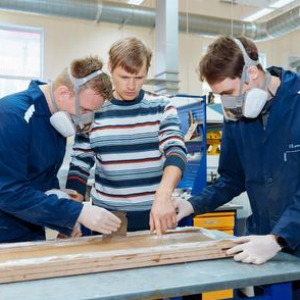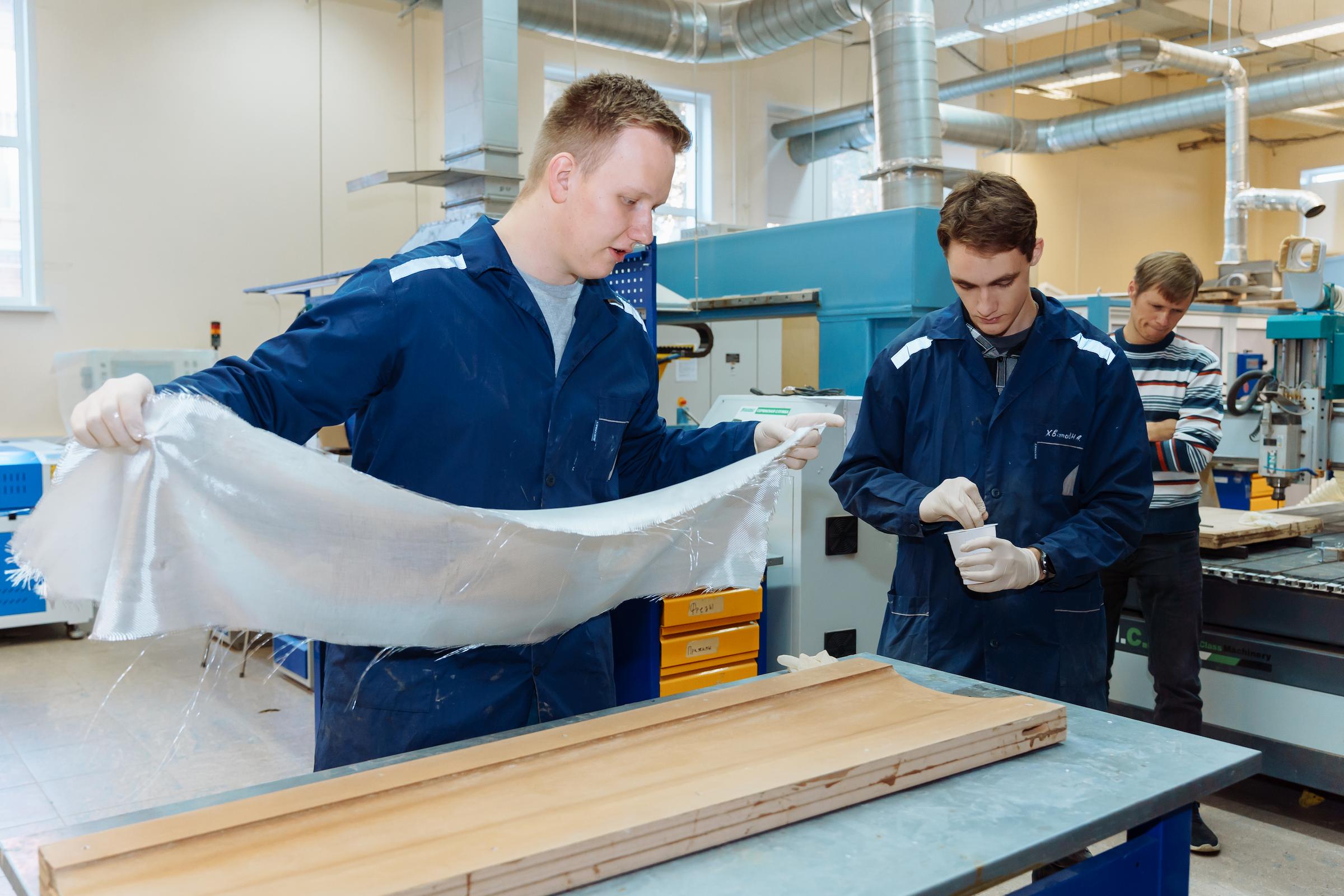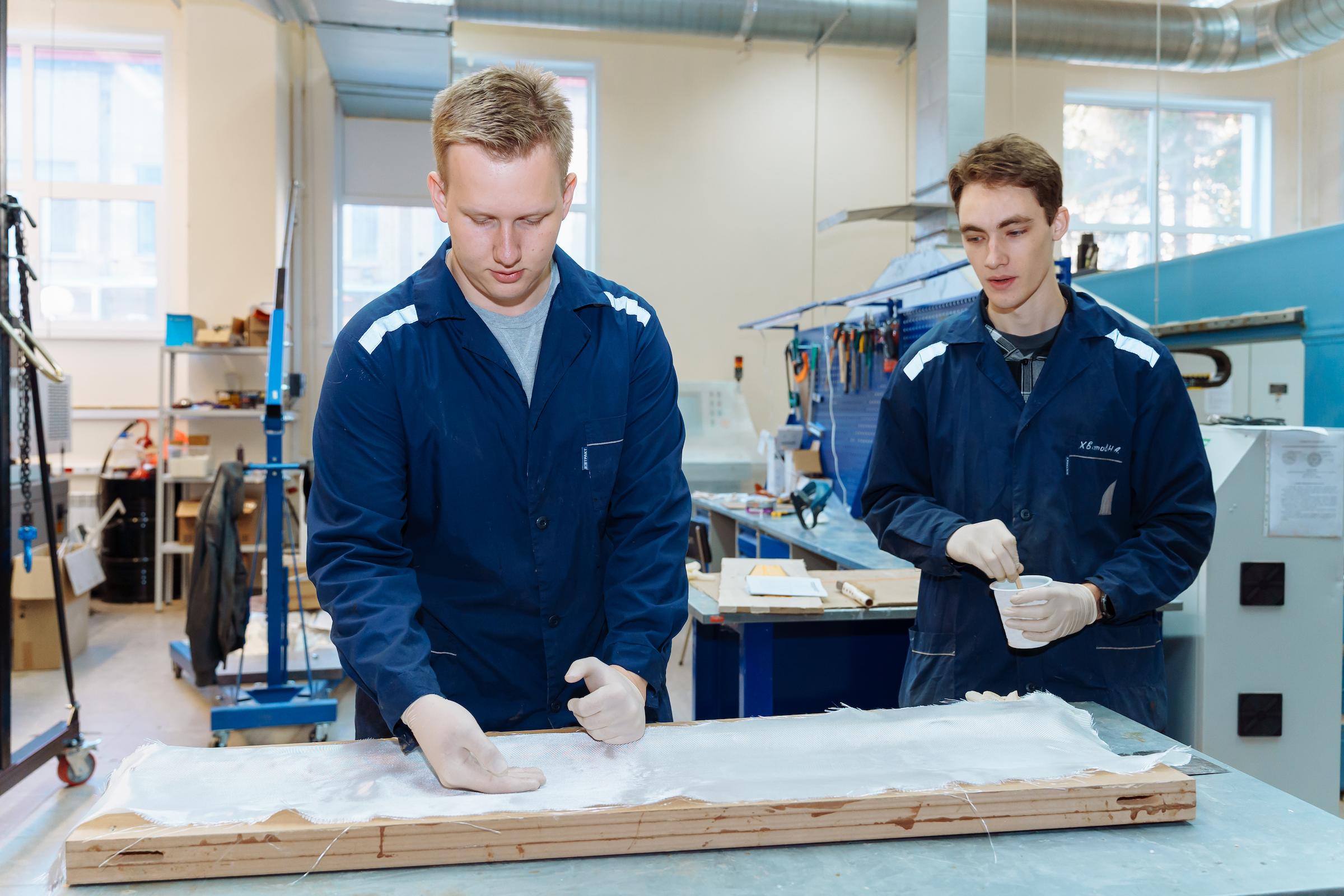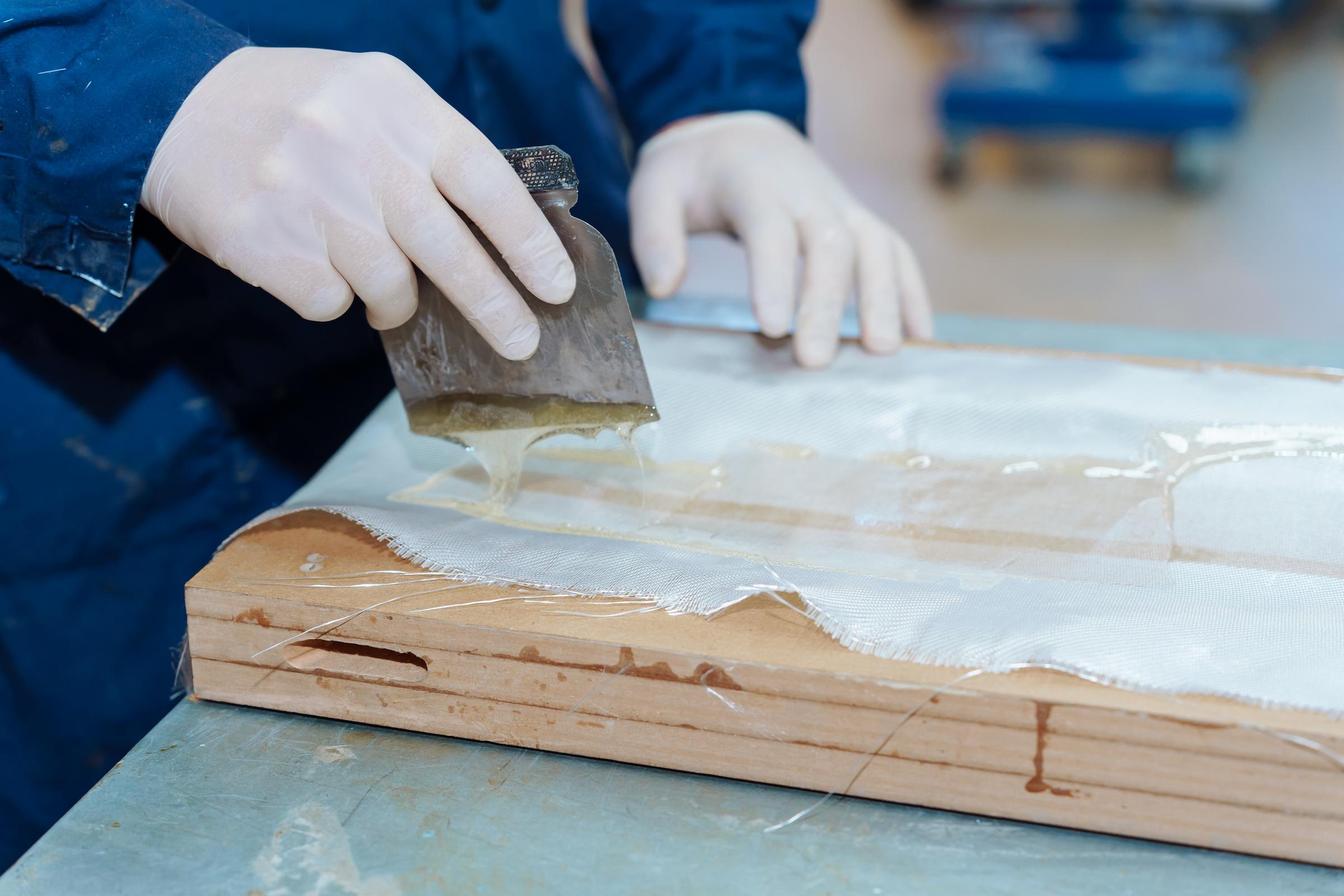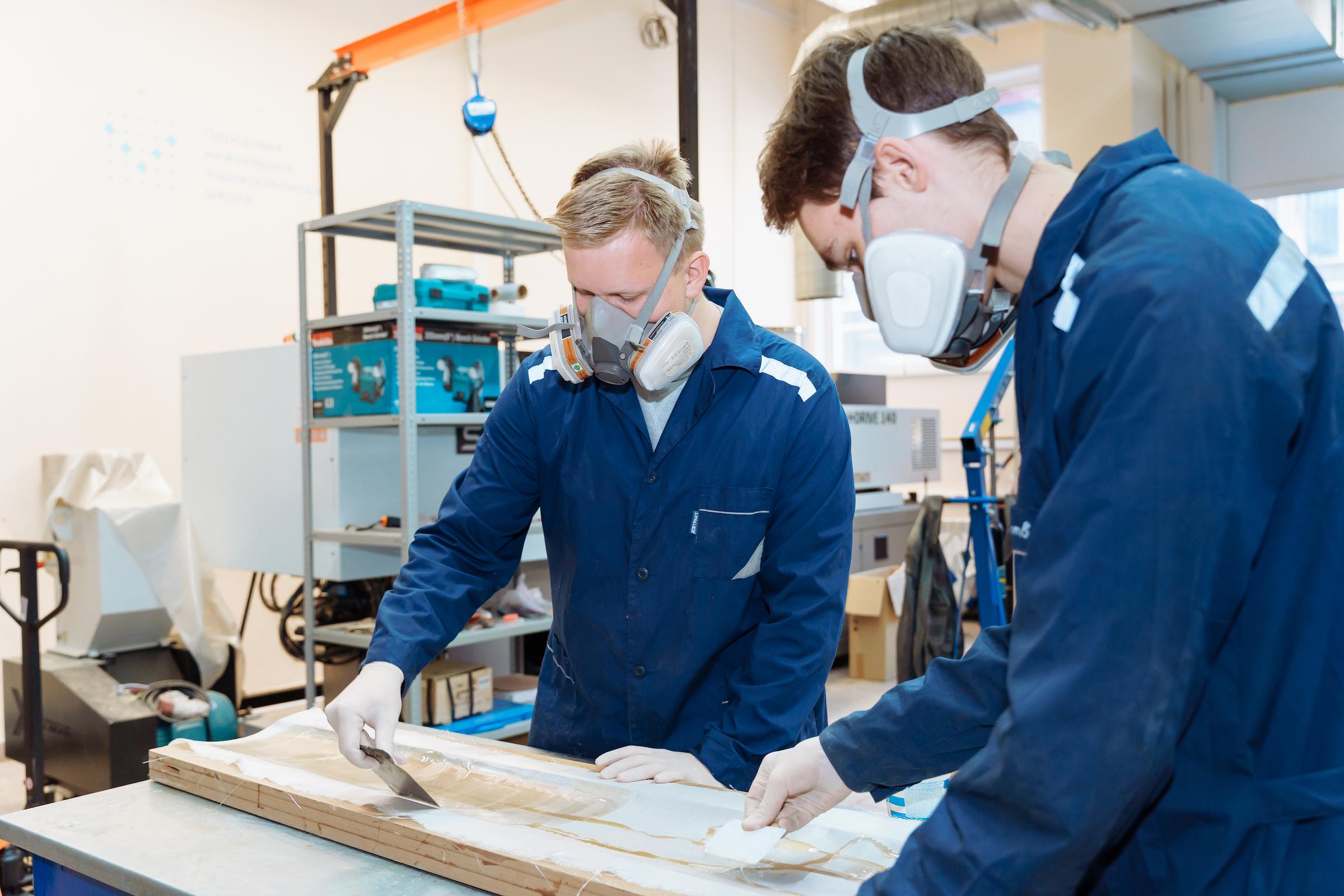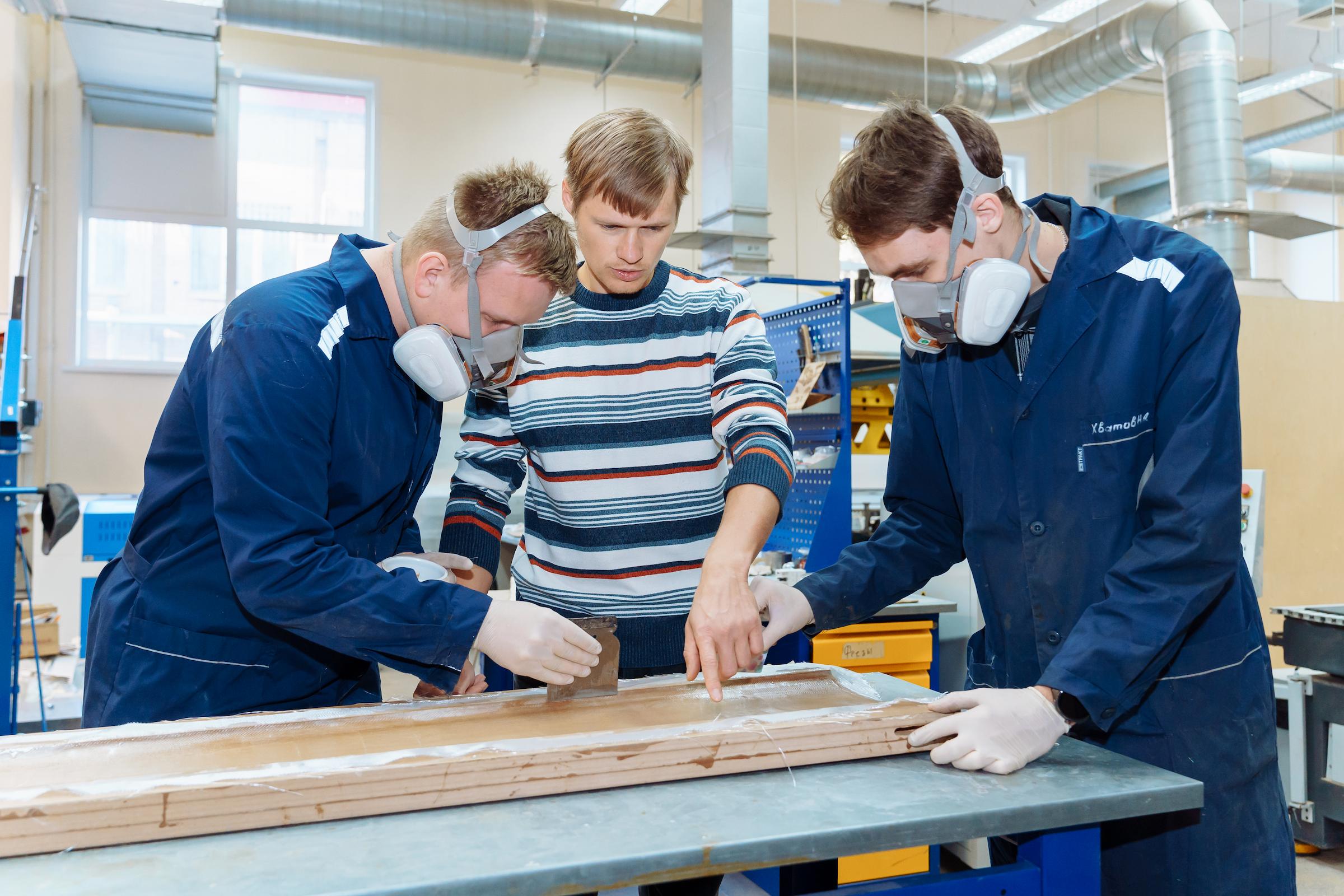Specialists of Samara University has developed and mastered the production of a lightweight and cheap-to-manufacture unmanned aerial vehicle, the body of which is completely made of fiberglass. The technology used makes it possible to reduce the weight of the drone compared to a number of similar devices, which increases the range and speed of flight, as well as the mass of the payload that an unmanned aerial vehicle (UAV) can take on board.
Work on the creation of the drone was carried out at the new technological base of the Advanced Aerospace Engineering School of Samara University. The first sample of such a UAV has already been manufactured, tested and sent to the customer - one of the regional airframe aviation companies.
"The new aircraft-type UAV was developed at the Scientific and Technological Center of Composite Materials of Samara University and is designed to solve various problems of agriculture. It is distinguished by the high aerodynamic quality of the airframe* and the low power consumption of the power plant, which ensures a flight duration in economy mode of up to 30 minutes at a speed of 80 to 120 km/h. The powerful mechanization of the wing trailing edge** allows you to perform a fairly short takeoff and landing - about 25 meters - right in the field, on small sites. When creating the drone, modern design techniques developed at our University were used and made it possible to fully realize the inherent aerodynamic characteristics, which were confirmed in practice already during the first test flight," said Oleg Lukyanov, associate professor of the Department of Aircraft Design and Engineering, head of the interactive complex of advanced training of engineering personnel based on modern digital technologies "System engineering of unmanned aircraft systems" of Samara University.
The take-off weight of the device is 6.5 kg, of which 1.5 kg of payload. The wingspan is 2.5 m, the length of the fuselage is 1.35 m. No expensive foreign materials were used in the construction: fiberglass is made from domestic fiberglass fabric and epoxy resin.
"Fiberglass is often the optimal material for aircraft-type UAVS - it is a durable, rigid, lightweight and fairly inexpensive material, and its production is quite technologically advanced. Carbon fiber, or carbon, which is popular in the production of drones, is about 6-7 times more expensive than fiberglass, while the high mechanical characteristics of expensive carbon fiber are often simply not needed for small-sized UAVs. In addition, the use of carbon fiber in some structural elements may be limited due to its conductivity. Fiberglass, unlike carbon fiber, is completely radio-transparent, it completely passes electromagnetic waves, so the body of a fiberglass drone does not create any problems for on-board radio equipment, as it happens on carbon-fiber UAVs," Oleg Lukyanov stressed.
According to the scientist, the technical equipment of the scientific and technological center made it possible to manufacture the wing structure from composite materials by vacuum molding, which reduced the weight of the structure, provided high-quality aerodynamic contours and increased the rigidity and strength of the fuselage and wing. In a highly simplified form, the technology looks like this: fiberglass impregnated with resin is placed in a matrix that repeats the shape of the future part or structure - almost like wet laundry in an empty basin. Then the air is pumped out, and in the conditions of the vacuum created, atmospheric pressure tightly presses this resin-impregnated fiberglass to the matrix. In the process of further "baking" in the oven, the product polymerizes, turning into durable fiberglass.
The fuselage is made a little differently - by contact molding according to the master model: resin-impregnated fiberglass is laid in fragments, like papier-mache, on a foam mandrel, repeating the shape of the fuselage. After the required number of layers of fiberglass are laid on the blank, the resulting product should be wrapped with a film to ensure better compression between the layers of the composite and with the surface of the blank to achieve the required accuracy and the desired strength characteristics of the structure.
Due to the cheapness of the material and the relatively low cost of technological equipment, this technology turns out to be very economically advantageous in the mass production of articles - from 10 pieces and above. At the same time, the molding process itself is quite fast. Pumping air out of the bag takes only a few minutes, and heating allows you to significantly speed up the polymerization process: several hours are enough to completely solidify the product, after which the product can be removed from the mold and mechanical post-treatment can be carried out.
For the manufacture of the drone, a system for thermal vacuum molding of products made of polymer composite materials, manufactured by the Ulyanovsk company Delta-M, was installed at the scientific and technological center of composite materials. The volume of the furnace in this powerful system allows polymerizing sufficiently large products under vacuum: the dimensions of the working area of the furnace are 7 x 3 x 2.2 m.
"Based on the available capacities, we can produce such UAVs in series, and in the future it will even be possible to manufacture large structures for manned aircraft here. In addition, the experience gained in the creation of this drone will undoubtedly find and is already being reflected in the educational process," Oleg Lukyanov noted.
For reference:
* Airframe - the supporting structure of an airplane or other aircraft, includes the fuselage, wings, tail and other structural elements.
** Wing mechanization - a set of devices on the wing of an aircraft designed to regulate its load-bearing properties. Mechanization may include flaps, ailerons, interceptors, and other elements.
Photo: Olesya Orina
